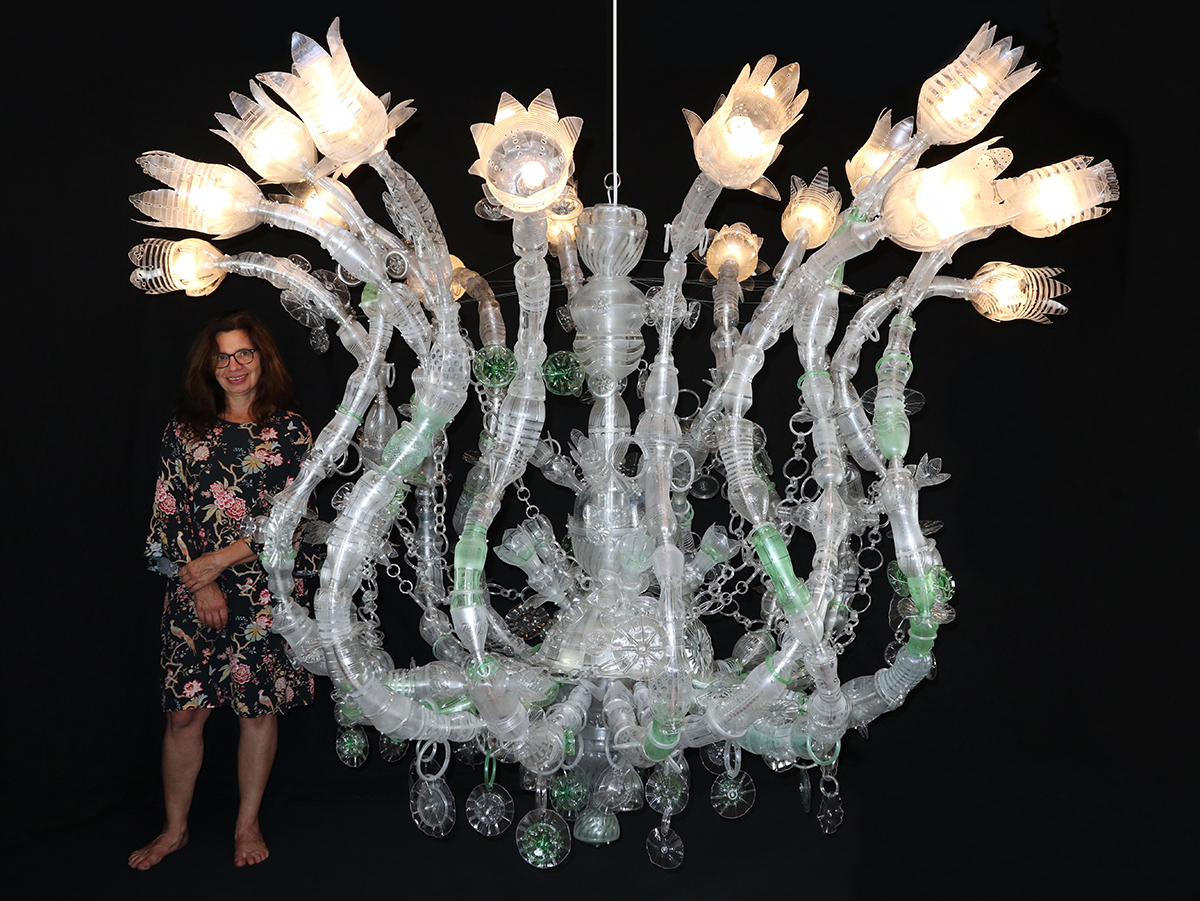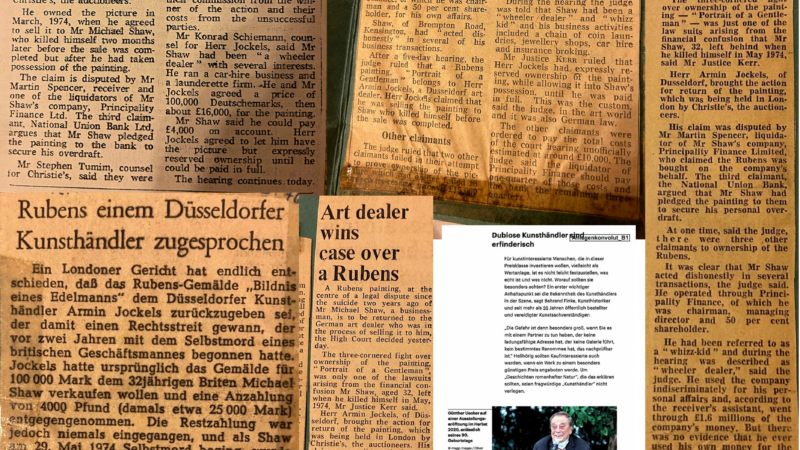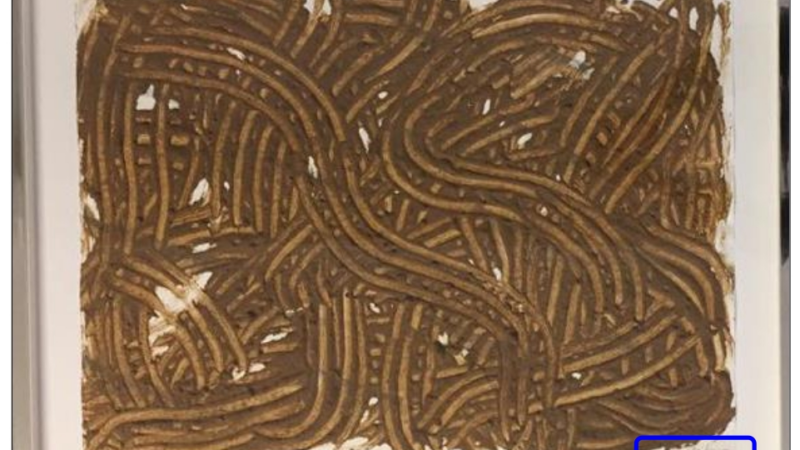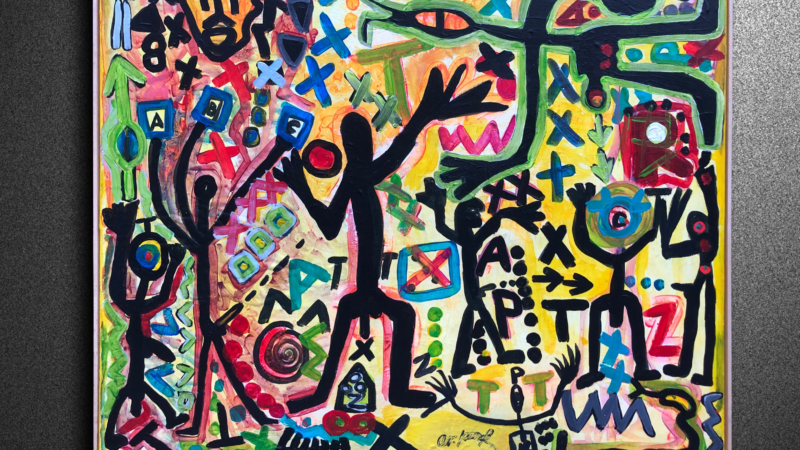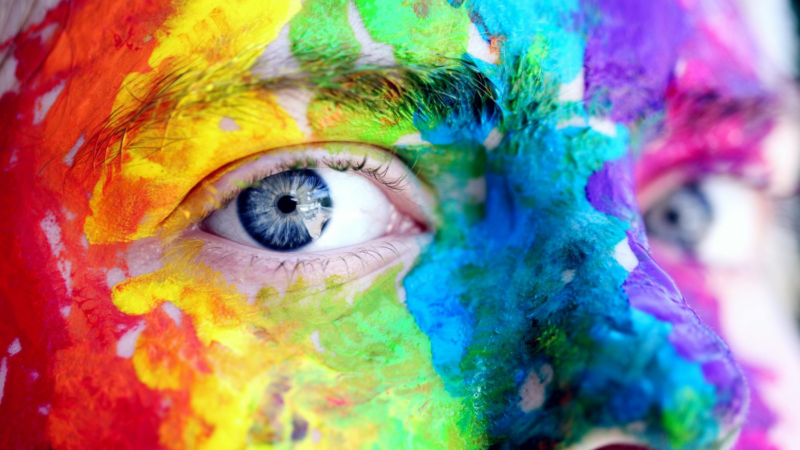Plastic waste: material for art
Used plastic bottles are not waste, but a valuable resource. They can be reprocessed in a variety of ways and transformed into new products or fresh energy. And into art. This is exactly what Veronika Richterová does. The Czech artist creates fascinating sculptures made out of old PET bottles.
Plastic has inspired artists from the very beginning. The reason: plastic meets almost all technical and aesthetic requirements. It is a universal material and is considered modern and progressive. This not only applies to new products: art has long since discovered used plastic as a valuable material.
Plastic bottles become sculptures
„PET bottles have become an important part of my life,“ says Czech artist Veronika Richterová, known for her work in the field of „plastic bottle art“, or PET-ART for short. She has been raving about the material for 20 years: „I appreciate its lightness and flexibility, its translucency and its bright colors.“ And emphasizes: „Its longevity and unbreakability are a great advantage, especially when my sculptures are shown at various exhibitions. And there have already been more than fifty of them.“ She has shown PET-ART chandeliers as well as lifesize representations of, animals and plants in the Czech Republic, Germany, Great Britain, France, Italy, Japan, Australia and the USA. These include a crocodile made from 360 PET bottles, which she presented for the first time in the Fata Morgana greenhouse of the Botanical Garden in Prague.
At the same time, she and her husband are building a museum for PET bottles; their collection „comprises around 5,000 exhibits from 139 countries“. The number continues to grow, as friends are now joining in her passion for plastic. She describes her intention: „My main motive was to transform something that is seen as waste into something more valuable that can have a lasting value.“
Significance beyond the realm of art
The artist is not alone in this approach. The global presence of plastic waste and its ability to be recycled is causing a rethink: what was once a disposable product has become a source of valuable material. A creative and trendy one as well.
PET also promotes a sustainable circular economy, keyword: bottle-to-bottle processes. Establishing collection points and systems in rural areas of developing and emerging countries is central to being able to fully exploit the recycling potential of used plastic. This aspect needs to be taken into account when developing new material and thermal processing technologies. As practiced, for example, by the recycling companies IMER and PLANETA in Mexico: By accepting used plastic bottles for a fee, they combine environmental protection and poverty reduction. Creativity and innovation are therefore not limited to the procurement and processing of new materials, but are revealed above all in the productive use of what was previously considered waste. Art often precedes such developments.
About the yes or no Editorial Team
A team of experienced writers and editors transforms relevant topics and well-researched information into clear and journalistically sophisticated texts.
Contact
yes or no Media GmbH
Claudia Wörner
Vor dem Lauch 4
70567 Stuttgart
Phone: +49 711 75 85 89 90
E-Mail: 
Url: http://www.yesorno.de
Bildquelle: @Michal Cihlár

